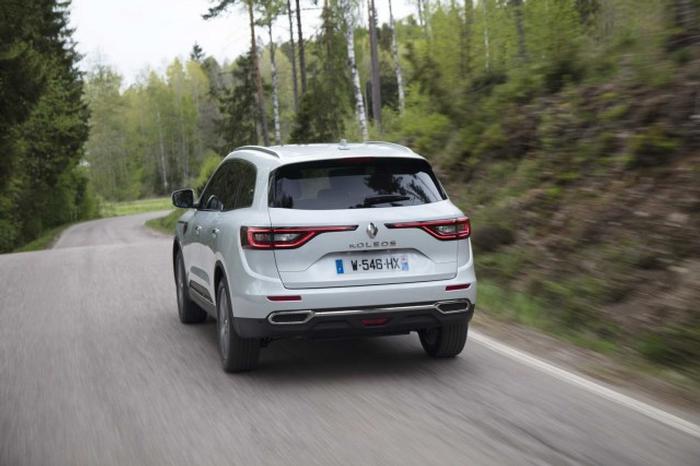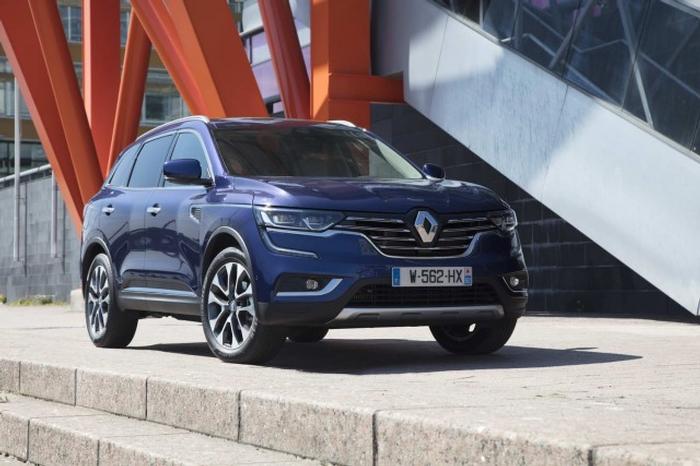2016 - 2020 Renault Koleos SUV Review

The Koleos wasn't on sale in Ireland long, but is it worth seeking out on the used market?
Review
What’s it like?
Renault had already had one go at a Koleos SUV (the original built from 2006 onwards) by the time the second-generation revived the nameplate for right-hand-drive markets. This newer Koleos, sold in Ireland from 2017 onwards, was an intriguing proposition in that it took the Nissan X-Trail underpinnings – which had the selling point of being a seven-seat SUV – and repurposed it as a more luxurious, five-seat-only model.
Designed to sit above the smaller Captur and Kadjar crossovers in the range, the Koleos has much to recommend it, such as a high-quality interior, smooth driving manners and attractive exterior styling, but as it wasn’t on sale for long then it’s not the family SUV with the most plentiful supply when it comes to the used market. Although it was based on an X-Trail and not the smaller Qashqai, its five-seat layout meant it was inevitably compared to smaller cars. Therefore, alternatives for the Renault are widespread – including the Volkswagen Tiguan, Ford Kuga, Opel Grandland, Peugeot 3008, Honda CR-V, Toyota RAV4, Skoda Kodiaq, Hyundai Tucson, Kia Sportage and many, many more – even if the Koleos is more spacious inside than most of them.
Which model to go for?
Renault only sold the Koleos here with turbodiesel engines. From launch, there was a basic 1.6-litre dCi unit with 130hp, which drove its front wheels through a six-speed manual gearbox. Sitting above it in the line-up was a 2.0-litre dCi, rated at 175hp, which had a choice of the manual or an Xtronic continuously variable automatic transmission (CVT), and that was four-wheel drive no matter which gearbox you selected.
In 2019, two new dCi engines replaced these, although it’s not immediately apparent with the larger unit that you’re looking at an all-new one – it remained a 2.0-litre dCi with 4WD, but now the Xtronic was the standard transmission and peak power increased to 190hp.
Below that, there was a more notable change as a 1.7-litre dCi joined the ranks to oust the 1.6, this new unit making 150hp. Renault took the decision to drop the manual gearbox so this Koleos was now also solely available with a CVT automatic, but it remained front-wheel drive. These two newer engines are sometimes referred to as ‘Blue dCi’, to specify their enhanced status.
To drive, the Koleos is quiet, comfortable and assured, and it’s also decent in the corners – without ever being exciting to drive. All the diesel engines suit the SUV’s character but the newer 1.7 is about the best blend of performance to parsimony, while trims originally ran Dynamique, Dynamique S Nav and the Signature Nav, being later joined by Iconic and GT-Line specifications.
One benefit of Renault not offering seven seats in the Koleos is a huge boot. All-wheel-drive versions had a 565-litre cargo area with all seats in use, rising to 1,795 litres with the second row folded away. The front-wheel-drive Koleos matched that outright carrying capacity but had a slightly larger 579-litre boot with a full complement of passengers onboard.
Does anything go wrong?
Being based on a rugged and dependable Nissan, the Renault Koleos doesn’t have any major known faults. As an all-diesel line-up, the key is going to be ensuring the diesel particular filter (DPF) isn’t clogging up from repeated short-journey, cold-engine use, so it might actually be better to get a higher-mileage example with a solid history if you’re looking for a second-hand example – that way, you’re more likely to get a car which has done motorway work, which allows the DPF to heat up properly and run through its regular, automated cleaning cycles.
Renault issued just one recall for this generation of Koleos, which related to the fact the bonnet could become loose and detach from the vehicle while it was in motion. While alarming, this recall isn’t relevant to us here in Ireland, as it pertains to examples built between 2022 and 2023 – and the Koleos had gone off sale here in 2020, so you shouldn’t encounter a used car which is affected by this problem.
2016 - 2020 Renault Koleos SUV Review

The Koleos wasn't on sale in Ireland long, but is it worth seeking out on the used market?
Review
What’s it like?
Renault had already had one go at a Koleos SUV (the original built from 2006 onwards) by the time the second-generation revived the nameplate for right-hand-drive markets. This newer Koleos, sold in Ireland from 2017 onwards, was an intriguing proposition in that it took the Nissan X-Trail underpinnings – which had the selling point of being a seven-seat SUV – and repurposed it as a more luxurious, five-seat-only model.
Designed to sit above the smaller Captur and Kadjar crossovers in the range, the Koleos has much to recommend it, such as a high-quality interior, smooth driving manners and attractive exterior styling, but as it wasn’t on sale for long then it’s not the family SUV with the most plentiful supply when it comes to the used market. Although it was based on an X-Trail and not the smaller Qashqai, its five-seat layout meant it was inevitably compared to smaller cars. Therefore, alternatives for the Renault are widespread – including the Volkswagen Tiguan, Ford Kuga, Opel Grandland, Peugeot 3008, Honda CR-V, Toyota RAV4, Skoda Kodiaq, Hyundai Tucson, Kia Sportage and many, many more – even if the Koleos is more spacious inside than most of them.
Which model to go for?
Renault only sold the Koleos here with turbodiesel engines. From launch, there was a basic 1.6-litre dCi unit with 130hp, which drove its front wheels through a six-speed manual gearbox. Sitting above it in the line-up was a 2.0-litre dCi, rated at 175hp, which had a choice of the manual or an Xtronic continuously variable automatic transmission (CVT), and that was four-wheel drive no matter which gearbox you selected.
In 2019, two new dCi engines replaced these, although it’s not immediately apparent with the larger unit that you’re looking at an all-new one – it remained a 2.0-litre dCi with 4WD, but now the Xtronic was the standard transmission and peak power increased to 190hp.
Below that, there was a more notable change as a 1.7-litre dCi joined the ranks to oust the 1.6, this new unit making 150hp. Renault took the decision to drop the manual gearbox so this Koleos was now also solely available with a CVT automatic, but it remained front-wheel drive. These two newer engines are sometimes referred to as ‘Blue dCi’, to specify their enhanced status.
To drive, the Koleos is quiet, comfortable and assured, and it’s also decent in the corners – without ever being exciting to drive. All the diesel engines suit the SUV’s character but the newer 1.7 is about the best blend of performance to parsimony, while trims originally ran Dynamique, Dynamique S Nav and the Signature Nav, being later joined by Iconic and GT-Line specifications.
One benefit of Renault not offering seven seats in the Koleos is a huge boot. All-wheel-drive versions had a 565-litre cargo area with all seats in use, rising to 1,795 litres with the second row folded away. The front-wheel-drive Koleos matched that outright carrying capacity but had a slightly larger 579-litre boot with a full complement of passengers onboard.
Does anything go wrong?
Being based on a rugged and dependable Nissan, the Renault Koleos doesn’t have any major known faults. As an all-diesel line-up, the key is going to be ensuring the diesel particular filter (DPF) isn’t clogging up from repeated short-journey, cold-engine use, so it might actually be better to get a higher-mileage example with a solid history if you’re looking for a second-hand example – that way, you’re more likely to get a car which has done motorway work, which allows the DPF to heat up properly and run through its regular, automated cleaning cycles.
Renault issued just one recall for this generation of Koleos, which related to the fact the bonnet could become loose and detach from the vehicle while it was in motion. While alarming, this recall isn’t relevant to us here in Ireland, as it pertains to examples built between 2022 and 2023 – and the Koleos had gone off sale here in 2020, so you shouldn’t encounter a used car which is affected by this problem.



